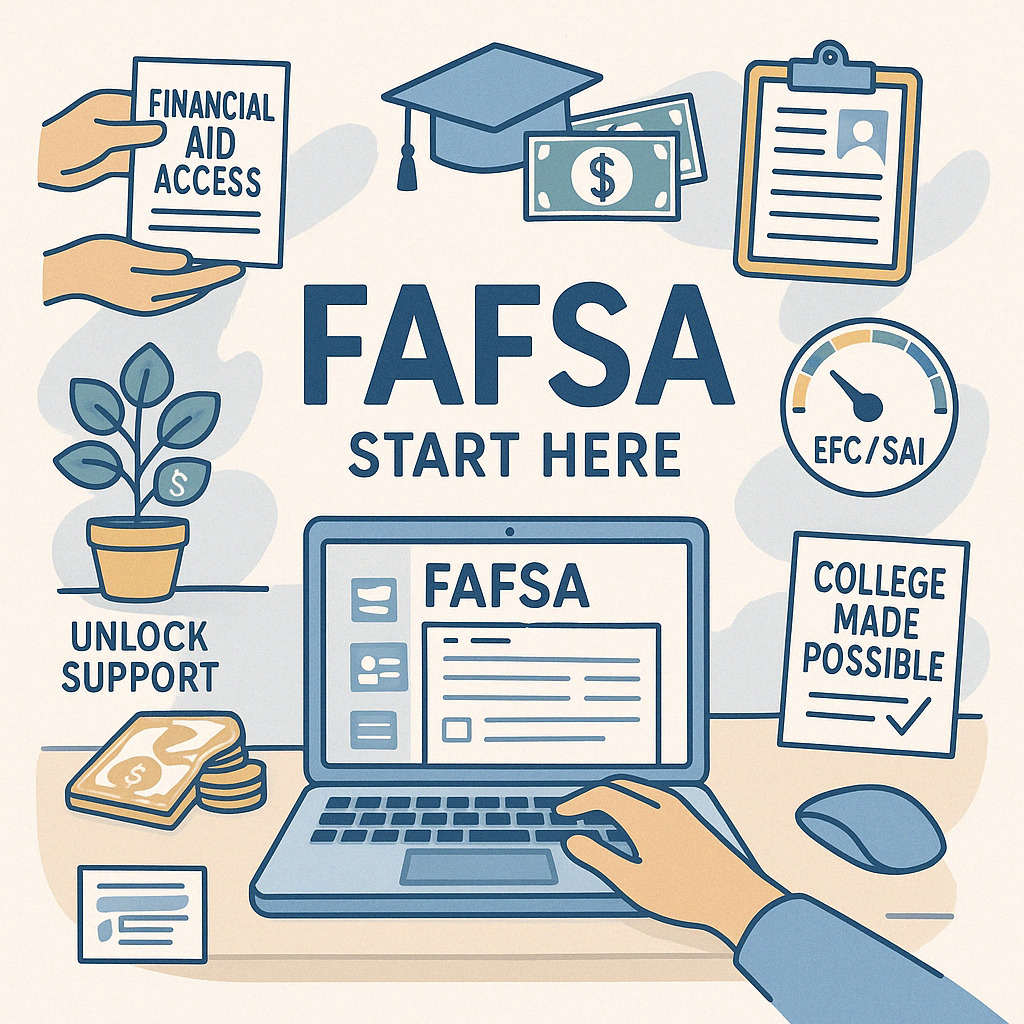Introduction
The world of student loans can be overwhelming for students and parents alike. Luckily, the U.S. Department of Education (DOE) has several student loan programs that can all assist you in paying for your higher education. The vast majority of these loans are obtained via the Free Application for Federal Student Aid (FAFSA). In this article, you will discover what Dept of Education student loans are, their association with FAFSA, and tips on what kind of loans you will be eligible for, as well as information to manage your repayment even more efficiently.
What Are the Dept of Education Student Loans?
Dept of Education student loans are federally funded loans issued by the U.S. government to assist students in covering their expenses for college or career school. These loans are included in the federal student aid programs administered by the Office of Federal Student Aid, a division of the U.S. Department of Education. Unlike private loans, these loans through the government tend to have lower interest rates, flexible repayment plans and protections for borrowers.
Understanding FAFSA and Student Loan Eligibility
FAFSA stands for Free Application for Federal Student Aid, and it is the key to federal student loans and other types of financial aid like grants and work-study programs. Filling out a FAFSA is required if you wish to receive Dept of Education student loans. It gathers financial and household data to assess your eligibility and expected family contribution (EFC), now called the Student Aid Index (SAI).
Once submitted, colleges will use this information to help you create a financial aid package that meets your need — which could consist of federal loans, a scholarship, or grant.
Dept of Education Student Loans — Types
There are a few different types of federal student loans within the DOE umbrella, and they all require submission of the FAFSA:
Immediate Subsidized Loans
- Who’s Eligible: Undergraduates with financial need.
- Key Benefit: Interest accrues while you’re in school at least half time, but the government pays the interest during school and grace or deferment periods.
Direct Unsubsidized Borrowing
- Who’s Eligible: Undergraduates, graduates and professional students. No financial need required.
- Key Point: Interest starts piling up during all periods, including while you’re in school.
Forward PLUS Loans
- Who’s Eligible: Graduate students or parents of dependent undergraduates
- Main takeaway: Credit history is reviewed; interest begins accruing right away.
Direct Consolidation Loans
- Who’s Eligible: Borrowers with multiple federal loans.
- Advantage: Consolidates multiple loans into a single monthly payment making it easy to manage.
FAFSA and Federal Student Loan Eligibility Requirements
To qualify for Dept of Education student loans through FAFSA, applicants shall meet the following criteria:
- Have U.S. citizenship or eligible non-citizen status
- Not have a valid Social Security number
- Have a high school diploma or GED
- Are enrolled in (or accepted for enrollment in) an eligible degree or certificate program
- SATISFACTORY ACADEMIC PROGRESS.
- Not default on a federal student loan
- Not have a refund due on a federally-backed loan
Certain loans, including PLUS loans, have other requirements including a credit check.
Applying for Dept of Education Student Loans with FAFSA
If you pursue student loans through the DOE, you’ll take a few steps: that begin with submitting the FAFSA:
- Now an FSA ID (studentaid.gov) gov
- Fill out the FAFSA form online, and enter income (as well as tax returns), and household information
- Enter the colleges you are applying to (max 20 schools)
- Complete the form before your state and school deadlines
- Check your Student Aid Report (SAR) for accuracy
- Get financial aid offers from the colleges you listed
You can then accept, decrease or refuse the amounts of the loans proposed.
Federal Student Loan Repayment Plans
Repayment starts after you graduate, leave school or fall below half-time enrollment. The Dept of Education is offering multiple plans for those in need of flexibility:
Standard Repayment Plan
- Fixed payments over 10 years
Graduated Repayment Plan
- Starts small, goes up every two years
Extended Repayment Plan
- Deep dive For high debt borrowers; Repayment up to 25 years
Income-Driven Repayment (IDR) Plans
- Payments each month according to income and family size
May result in loan forgiveness after 20–25 years
- Public Service Loan Forgiveness (PSLF)
Forgives balance after 120 qualifying payments for those in public service jobs
- Dept. of Education student loan benefits vs. private loans
- Lower interest rates
- Flexible repayment options
- Loan forgiveness programs
- Options for deferment and forbearance
- Just no credit check for most loans
- The interest paid in some cases is subsidized
These benefits make federal loans a more favorable first choice for most students than private lenders.
Common Mistakes to Avoid
Missing FAFSA Deadlines: Many types of aid are first-come, first-served.
- Borrowing more than you need: Just borrow if you need to.
- Defaulting without pursuing repayment options: If you’re struggling to make payments, explore income-driven plans before defaulting.
- If you think FAFSA is only about loans: It also qualifies you for grants and work-study.
- Avoiding the FAFSA because of high income: Many students incorrectly believe they won’t qualify.
Conclusion
Federal student loans, obtained via the FAFSA, are a key resource for millions of students seeking higher education. They can carry lax interest rates and repayment plans, and there’s potential for forgiveness — all benefits that private loans can’t match. To maximize the benefits, you need to understand the options, keep track of deadlines and select a repayment strategy that suits your financial goals.
So whether you’re a high school senior or an adult going back to school, start with FAFSA — it’s the first and most essential step toward getting the most financial aid possible.


